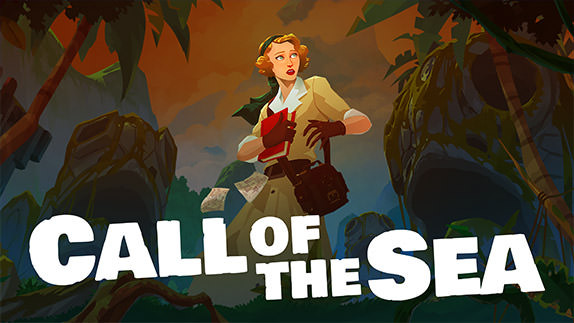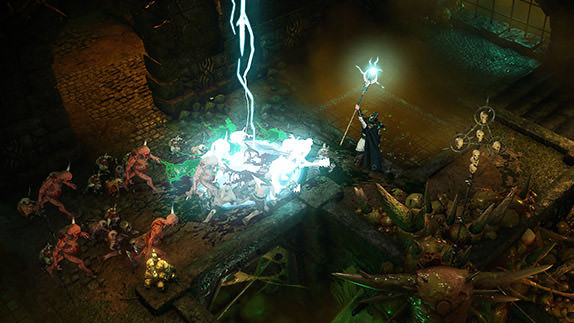Danganronpa: Trigger Happy Havoc Review

 By Kevin Mitchell | March 19, 2014
By Kevin Mitchell | March 19, 2014
As fate would have it, the same weekend my journey began in the world's beacon for the future, Hope's Peak Academy, I watched the cult-classic Battle Royale for the very first time. Danganronpa: Trigger Happy Havoc features a similar concept to the movie, as students are pitted against each other with the hope of escaping their respective "prisons". All of the students at Hope's Peak are masters in their own right, whether it's the ultimate baseball player, ultimate swimming pro, or ultimate fanfic writer. Then there's Makoto, who can only be considered the ultimate lucky student for winning a spot to attend the school through a lottery. With despair flowing freely throughout the hallways, Makoto may be the unluckiest instead.
Waking up on the first day of school in the same classroom as the rest of the students, it doesn't take long for Monokuma, a robotic bear, to show up and explain he's the one behind their imprisonment. With solid steel covering all of the windows, there's only one way to earn your freedom: kill another student and get away with it. Similar to the premise of The Hunger Games, Danganronpa explores the human condition when backs are up against a wall with only one possible way to survive.
Free time in the game is spent freely exploring the massive school, but for the most part, there isn't much you can do. Talking to one of the other students or examining different objects will progress the narrative forward as well as provide insight into the past of each student trapped in the school with you. Each of the chapters is interrupted by a gruesome murder at the hands of one of the students. Blindsided by the first murder, it didn't take long before the imprisonment was too much for one student to handle, and the first decimated body was discovered covered in bright pink blood. After a body is found, the game switches to investigation mode, allowing you and the other students to search for clues for the trial that will determine the fate of not only the accused but also every single student. You see, if the actual murderer is uncovered and confesses, they alone will be punished, but if the murderer gets away with it, the rest of the class will be punished by death.
At times, gathering evidence is one of the more engaging thrills in the game, but at the same time, very tedious. More often than not, the game straight up tells you where you have to go to search for the next clue, and the game won't let you leave the vicinity until you find everything that is needed. This means clicking on every object in the environment and talking to every character in the room, sometimes multiple times before moving on.
Monokuma, unrelenting and full of despair, tries to influence the students' reluctance to kill by offering incentives: large sums of money and having them doubt their newfound trust in one another. None of the murders are committed out of bloodlust, and each one of the murderers has their own reasons for why they did what they did. I may not have liked the outcomes, but Danganronpa allows the characters to develop so well that I could reflect afterwards and see it from their point of view.
The trials happen relatively fast, forcing you to stay on your toes as you attempt to present your arguments, catch other students in lies, and set the record straight. Similar to the Phoenix Wright series, there's an objection statement shouted out when Makoto catches someone in a lie or doesn't have all the facts. Each of the different game modes feels like a mini-game, with Makoto blasting incorrect statements in debates with "truth bullets" – the evidence collected during the investigation. Hangman's Gambit requires you to finish spelling out words by tapping letters that fly across the screen. The most hectic challenge is when you do battle against another student in a rhythm-style Bullet Time Battle.
The final game mode has you complete a manga-style timeline (read right to left) of the events that transpired, piecing together everything that happened prior to, during, and after the murder. A pool of tiny illustrations is used to fill in the missing panels, but at times I found it difficult to figure out what they're supposed to represent. Getting anything wrong in the trial will decrease your health meter, and if you make too many mistakes, the murder is pinned on you. Failing doesn't have much consequence, as you'll restart at the same part of the trial that was failed. Even if you fail to pay attention to anything in the game, eventually you'll succeed by trial and error.
There isn't much room for surprises during the trials, as you'll go into them with a general idea of who committed the murder ahead of time, but the game does keep a few aces up its sleeve and reveals them at the most optimistic moments. More than once, my quiet morning commute was interrupted as I found myself gasping loudly or giving off an audible "are you kidding me?"
Completing the narrative in Danganronpa gives you the opportunity to play the game without having to worry about pesky murders. This new mode allows you to interact with all of the characters, which was only a side-note in the main mode between murders. I had a good time getting to know some of the characters that I never spoke to during the main game and learning their backstory without seeing them covered in blood the next day. Many of the trophies in the game are tied to your interaction with the other students in the School Life mode.
Simply Put
Danganronpa should be played by anyone looking for a different style of game for the PlayStation Vita. Investigating the different murders can be grueling at times due to the inconsistent pacing, as you fail to click on the one spot in the room the game wants you to, or you fail to realize you only spoke to a character once instead of twice. The trial gameplay mechanics can be confusing at times but can be passed by trial and error if you become stuck.
Note: Danganronpa: Trigger Happy Havoc was reviewed on PlayStation Vita. A digital copy of the game was provided by the publisher/developer.




